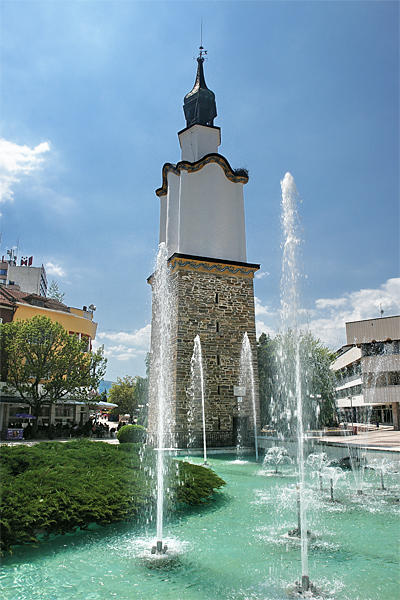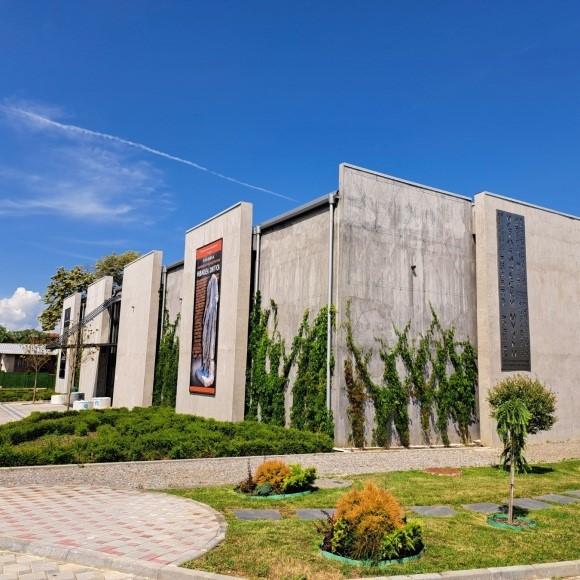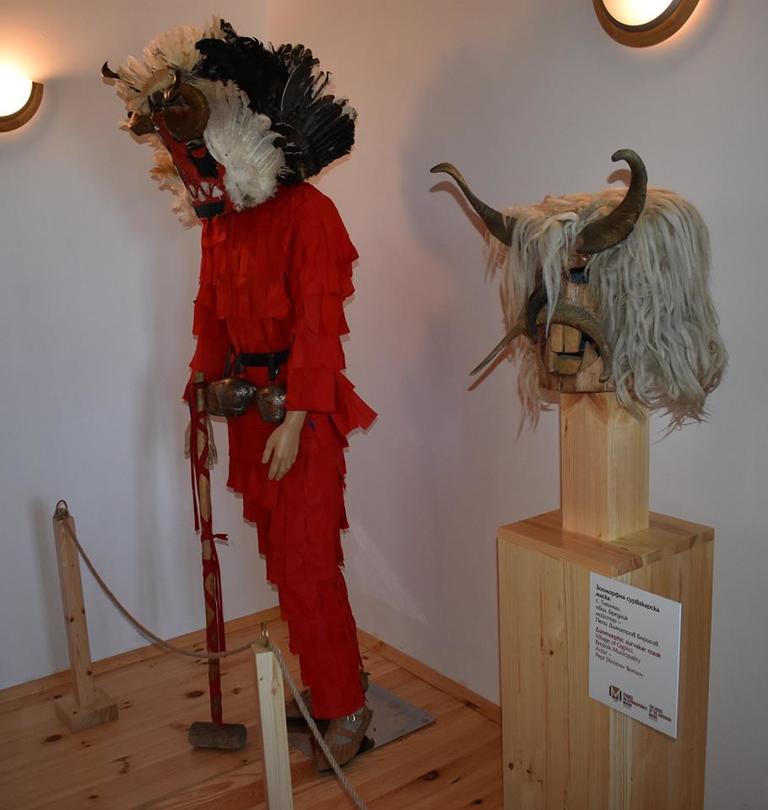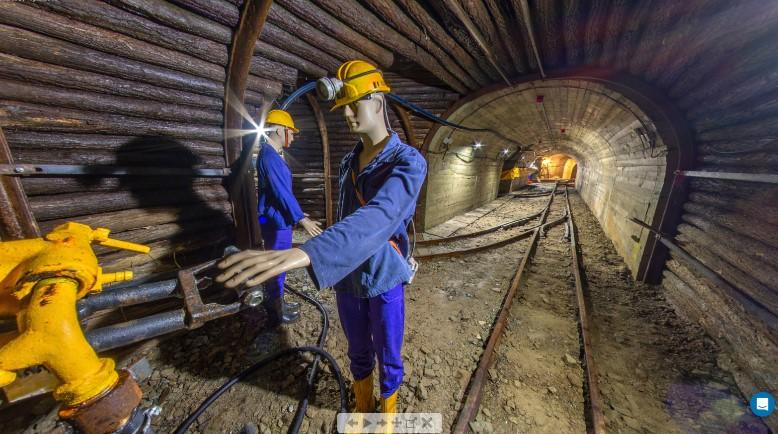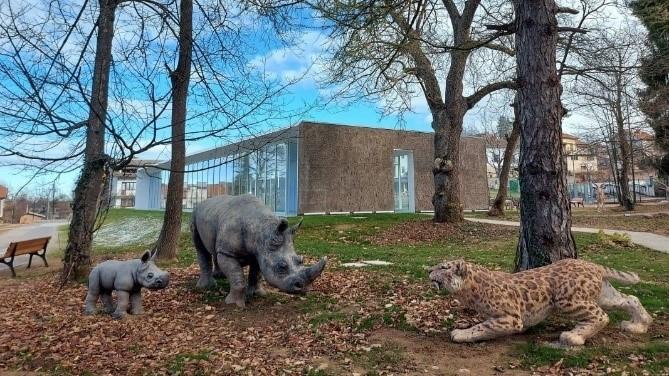Attractions, museums, eco-routes built with EU funds attract visitors to border settlements
Attractions, museums, eco-routes built with EU funds attract visitors to border settlements
By Ministry of Regional Development and Public Works
Over BGN 619 million have been invested in the development of Bulgaria's border regions through the territorial cooperation programmes.
More than BGN 619 million have been invested in the development and unlocking the potential of Bulgaria's border towns and regions under the 12 territorial cooperation programmes for the 2014-2020 period managed by the Ministry of Regional Development and Public Works. A total of 833 projects have been approved and financed, most of which have been successfully implemented and completed by the deadline of the programmes - 31.12.2023. A small number of assignments are still under implementation and there is no risk of loss of funds as each of the programmes has been finally implemented at more than 95%, the managing secretariats report.
The largest number - 172 in total - are the completed projects under the INTERREG Romania-Bulgaria programme, through which nearly 259 million BGN have been invested in Northern Bulgaria. Under the INTERREG Greece-Bulgaria initiative, 133 projects have been implemented in the regions of Smolyan, Kardzhali, Blagoevgrad and Haskovo, securing investments of over BGN 125 million. Under the Bulgaria-Serbia cooperation programme, 110 projects have been implemented for nearly BGN 69 million, 109 tasks have been completed in the border areas of Bulgaria and Turkey for over BGN 61 million. Between Bulgaria and the Republic of North Macedonia, 78 projects have been implemented for nearly BGN 39 million. A further 231 projects for over BGN 66 million were implemented under the territorial cooperation programmes in which Bulgaria participated in the previous programming period - Balkans - Mediterranean, Danube, Black Sea, INTERREG Europe and URBACT III.
A significant part of the European investments under the programmes is aimed at opening tourist and natural attractions, cultural and religious sites for tourism development.
With funding from the INTERREG Romania-Bulgaria programme an archaeological park “Bridges of Time” was built in the town of. The project is a part of the “Bridges of Time” project, which includes accurate peĸonctyĸtions of elements of coastal fishing villages from the Old Stone, Roman-Copper, Bronze, Roman and Medieval eras. The project also landscaped the road to the historic site of the Rock Church. The programme has also improved the tourist infrastructure of the Zaldapa fortress and the Dry River area in the municipality of Krushari. An open-air museum has also been built, which presents columns, capitals and other finds discovered during the archaeological excavations of the fortress.
A completely new tourist route “Zaldapa - Dry Valley - Karsium” has been created with the possibility of archaeological camps, meetings, etc.
Also with the help of the programme, Shabla Municipality upgraded the “Archaeological Park Durankulak - Hamandji” and developed new tourist routes. In the municipality of Ruse, the Pantheon of Renaissance Heroes was reconstructed. In the town of Ruse. The largest paleopark in Bulgaria was built in Varshets, where one can see the natural environment in this part of the Balkans about 2.5 million years ago. The more attractive species of vertebrates from this era, known from the locality found near Varshets, are presented - rhinoceroses, ancient wild horses and artiodactyls, cheetahs, hyenas, sabre-toothed cats, large vultures, eagles, falcons, as well as bustards, tetras, larks, swiftlets and many other extinct bird species, as well as antelopes and warthogs. There is also an information centre.
Renovated museums and new attractions under the INTERREG Greece-Bulgaria programme delight the residents and guests of Chepelare and Madan. With more than BGN 2.4 million in the town of. The old mine in Madan has been transformed into a tourist attraction where visitors can learn how mining in the area developed and how ore was extracted. Under the project, the Sharenka cave, where the ancient Thracians also extracted and processed precious metals, was rehabilitated and made safe. With the help of wax figures, a reconstruction of an ancient cave family working underground was made. Visitors can also explore the renovated crystal hall, which exhibits unique crystal forms found deep underground alongside the region's ore mining. In the town of Chepelare, the Rhodope Karst Museum has been modernized and completely redesigned with funding from the program. It is unique in its kind and the only cave museum in Southeast Europe.
With funding from the programme the building of a former barracks in the town of. Petrich was transformed and it became a new home for the historical museum of the town. It houses the collections of valuable archaeological, historical and other objects that visitors can now explore. The enlarged space of the institution makes it possible to exhibit gold ornaments, old coins, statues, inscriptions that were difficult to see in the previous small building. Unique exhibits from excavations in the region and objects preserved for thousands of years are displayed in the halls. In addition, visitors to the new museum building can observe the work of the restorers, and the park space in which it is located is a pleasant place for a walk in the city.
A new eco-trail connecting the Church of the Assumption of the Virgin Mary in Kyustendil with the Skakavitsa waterfall near the town has been built under the Cross-border Cooperation Programme between Bulgaria and North Macedonia. Through the connection between the two sites, new destinations have been opened, with the aim of making them even more attractive to visitors in the region. With funding from the programme in Dupnitsa, accessibility to the natural heritage has been improved and the area around the Clock Tower has been landscaped. A platform where has been created visitors and tourists can find information about the monuments, events and other attractions in the municipality in 3 languages - Bulgarian, Macedonian and English.
Attractive projects have also been implemented under the Interreg - IPA Bulgaria - Serbia 2014-2020 programme. In the village of Kosharevo in Breznik, a “Mask Museum” has been built to preserve the local traditions of mask-making and the Kuker heritage, which has had an important place in the traditions of the region since ancient times. A folk house in the centre of the village has been restored for this purpose. Kosharevo, where the masquerade tradition is alive and the performance of the custom “Surva” - mass. It also houses a visitor centre, a workshop for Kuker masks, exhibition halls with historical artefacts from the region, from the Surva custom and a museum for Kuker masks. There is also a photographic centre, giving guests the opportunity to take photographs with the Kuker masks on display as souvenirs.
The Clock Tower in Botevgrad has been reconstructed and new attractions have been created around it with funding from the programme. The exterior and technological equipment of an advertising centre has been made, part of the cultural heritage has been digitalized and a museum space for various outdoor activities has been built behind the History Museum - Botevgrad. An outreach centre has also been established in the city of Bovetovo. The Centre has been set up in Botevgrad.
A number of initiatives have been implemented in the border region between Bulgaria and Turkey under the joint programme. In. A part of the Tsarevo Park has been renovated in the area between the Summer Reading Room and the new playground on “Kraymorska” Str. New paths, recreation and entertainment areas, a petanque playground, a large chess board with pieces for the children, as well as tables for playing backgammon and chess for the older visitors of the park were built. The money from the programme was also used for the reconstruction and architectural and artistic design of the garden bridge and the space in front of the city park in the city of Yambol. The tourism potential of Nessebar has also been increased. Mesembria, Metropolska, Ribarska and Mena streets were renovated in the most authentic way, creating an environment close to the natural atmosphere of the old town. Areas for street artists, actors and musicians have also been created. The restoration, conservation and creation of a tourist infrastructure accessible to visitors to the archaeological excavations at the medieval fortress “Aquae Calidae Terma” near Burgas was also funded. The Roman-era cold pool was drained and restored, and passages were built between the main parts of the site and the structures at the lowest levels. They also allow visitors to explore previously hidden parts, illuminated by decorative lighting. Special 3D scanning equipment and a powerful server have also been provided to digitise the artefacts from Aquae Calidae. Today, the museum's digital library contains more than 15,000 objects that represent 2,000 years of the site's history, from the Thracian settlers to the Ottoman Empire.
The programme has also created an area for active recreation and outdoor activities in the area “Plocest” near Topolovgrad. The traditionally used area for games and events in the nature with an area of more than 12 acres, located next to the town, is equipped with seating, shelters, playground and barbecue facilities. A volleyball, basketball and football court has been built, paths and a model of a Thracian sanctuary have been laid out.


